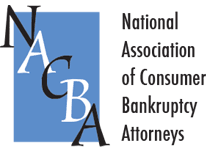121 S. Wilke Road, Suite 301, Arlington Heights, IL 60005
Home and Hospital Visits for Your Convenience
Serving Clients Across 7 Illinois Locations
How to Avoid Car Accidents By Recognizing Signs of Driver Fatigue

Startling findings from the National Sleep Foundation within the last year show that 60 percent of American drivers have driven while drowsy, and 37 percent have admitted to going as far as falling asleep behind the wheel. The National Safety Council (NSC) has taken this time of year as an opportunity to remind us that driver fatigue is a serious form of impaired driving, and a major cause of car accidents all across the nation, as Drowsy Driving Prevention Week recently took place during the month of November. With the increased amount of travel on the highways during the holidays, now seems a more fitting time than ever to heighten everyone’s awareness of the dangers of driving while sleepy.
How to Spot a Drowsy Driver
You may already be familiar with the telltale signs of driving fatigue, such as “nodding off” or frequent yawning. Constant blinking, disconnected thoughts, or having difficulty remembering the last few miles you drove are other signs that you are too tired to drive. How can you spot drowsy drivers around you, though, and would you be able to recognize the signs? Much like other forms of impaired or distracted driving, driver fatigue often gives off similar warning signs, which all defensive drivers should watch for, including:
-
Drifting in and out of lanes - Whether you are driving in front of or behind a car and notice the vehicle is swaying back and forth or weaving between different lanes, this is a major red flag that a driver is impaired, very likely due to drowsiness.
-
Hitting shoulder rumble strips - This is a scary event to witness, but rumble strips thankfully give the fatigued driver a chance to snap out of it, and they allow those in danger a chance to spot the hazard from the sidelines.
-
Tailgating - Unlike typical aggressive tailgating behavior on the road, tailgating due to drowsy driving often happens because the person operating the vehicle is falling asleep at the wheel. The driver may speed up when he or she stirs from nodding off, thinking he or she has to hurry and hit the gas to catch up with traffic.
-
Inconsistent speeding - Along with tailgating, if you notice a car speeding up and slowing down rather than staying at a constant speed, it may indicate that the driver is fatigued. Trouble maintaining speeds is a major symptom of drowsy driving, as it reflects the driver’s inability to stay focused and alert long enough to maintain a regular rhythm.
-
Driver’s head rolling forward, dropping, then snapping back to position - You may have the unfortunate experience of driving alongside another driver and physically see them nodding off through the window. If you witness with your own eyes a nearby driver struggling to keep his or her head up while behind the wheel, honk your horn repeatedly to try to get his or her attention, distance yourself, and call the police to alert them of the situation.
Contact an Arlington Heights Car Accident Lawyer
Remaining aware and alert on the roadway is an excellent defense against drowsy drivers who may be placing you and your loved ones in danger. However, defensive driving does not always prevent an automobile collision and injuries. If you have been involved in a car accident due to someone else’s negligence behind the wheel, it is crucial to speak with a competent, skilled Palatine personal injury attorney right away. Call Newland & Newland LLP today at 847-797-8000 to schedule a free phone consultation.
Sources:
https://www.nsc.org/road-safety/safety-topics/fatigued-driving
https://www.sleepfoundation.org/articles/drowsy-driving




















